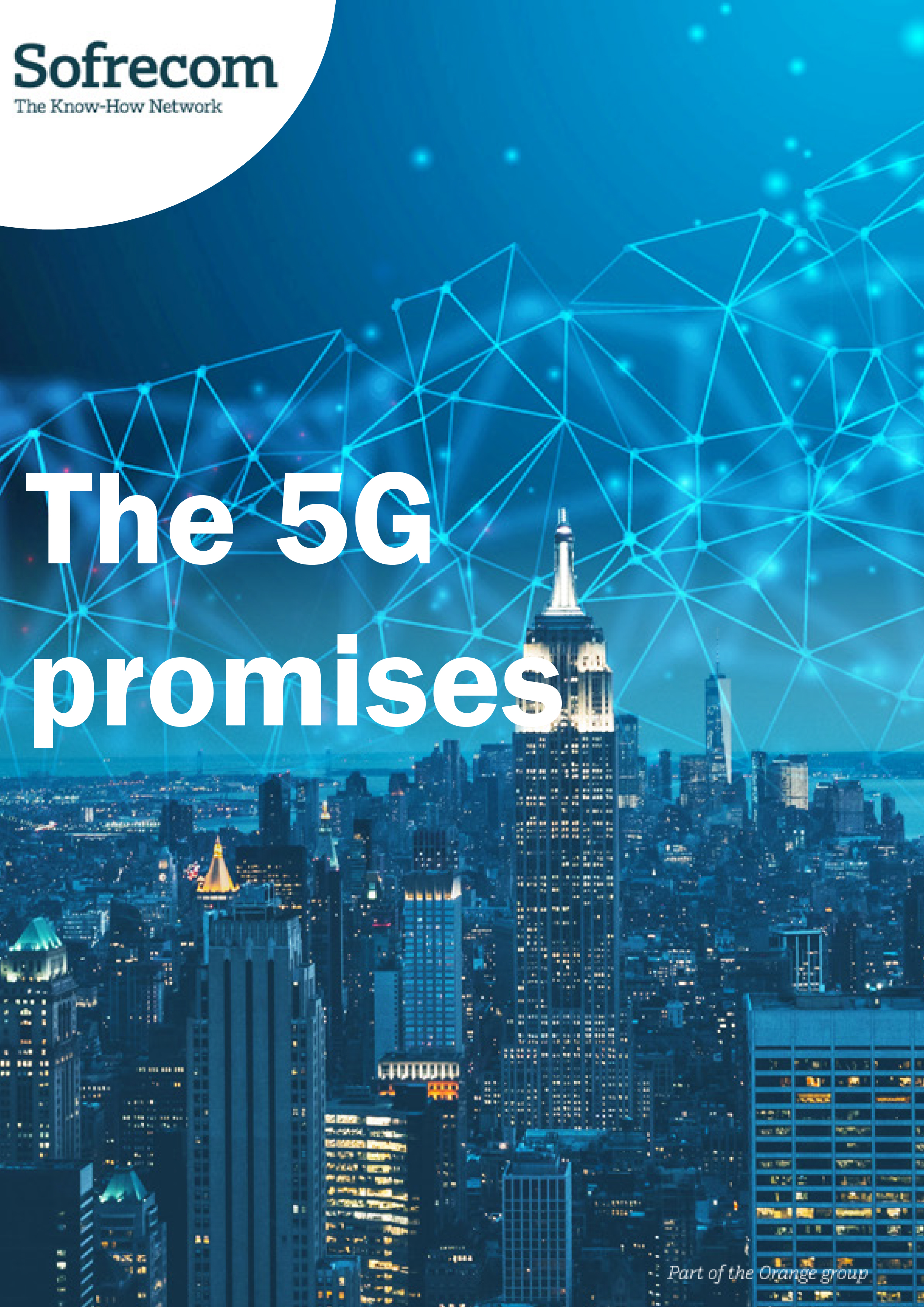
Operators relying on 5G to replace the fixed connection in the home will be able to offer convergence to customers they could not reach until now.
Florian Jozefowicz

Whenever a new mobile network technology is deployed, it gives operators the opportunity to rethink their product ranges and the price of their packages, as well as potentially monetize new uses. 5G is no exception to this rule. However, in a context where the consumer market appears to be satisfied with 4G, how can operators draw value from the new technology? The deployment of 5G is thus not only a technical challenge but also a test for operators’ business models.
A variety of “premium” pricing models potentially suited to the consumer market
Price increases are often the easiest way for operators to monetize a new technology. The first commercial launches of 5G on the mass market world-wide confirm this. Three main models have been used to implement this increase:
- A new 5G range, replacing the existing 4G: the operator gradually phases out its 4G plans, replacing them with plans built for 5G, understandably beginning with high-end plans. The new packages are offered at a higher price, possibly justified by a higher level of data. This scenario offers the advantage of presenting the 5G range in a simple and easily understandable light. However, it is hampered by low coverage levels and an under-equipped target population, as network deployment and 5G phone penetration remain fairly limited. As 4G plans are phased out, consumers are encouraged to migrate to 5G. However, a lack of customer enthusiasm to switch to this new technology could end up creating a boomerang effect: customers will instead feel prompted to look to other operators, offering high-end 4G packages.
- A new 5G range offered alongside the existing 4G range: the operator rolls out a new 5G range that coexists with the 4G. Predictably, the latter is offered at a lower price. This model enables the operator to maintain attractive 4G price levels in areas not covered by 5G. However, there are dangers for operators marketing the two ranges in parallel, particularly when it comes to managing their digital subscription pathways. Furthermore, this model does not encourage the customer to subscribe to 5G, in contrast to the previous scenario.
- 5G as an option in existing packages : the current range remains the same, but customers can choose to benefit from 5G by paying for an add-on. This model offers the advantage of being very flexible: the add-on can be made available with all packages or only some. Its price can vary depending on the package. A free trial offer can even be used to boost customer interest. However, the operator must make sure that this option is appropriately showcased by the sellers in-store and given enough visibility on digital channels. Moreover, reducing all the promises of 5G into a mere option could diminish the new technology’s value and thus its benefits in the minds of prospective consumers.
It should be noted that increasing price remains a dangerous undertaking. It is all the more so for 5G as consumer interest has not yet been established. According to a study[1] by PwC, only 1/3 of customers today would be willing to pay more for 5G. Some of the features that are of most interest to customers include: speed, unlimited data usage and network reliability.
Moreover, to offer any kind of premium package, the operator must demonstrate that its technology is reliable and available in a reasonable number of areas. In April 2019, Verizon became the first operator to launch a consumer mobile 5G offering in the United States for an additional $10 -- but had to backtrack almost immediately. Its network coverage and overall performance were simply not strong enough to make such a price increase acceptable.
New range segmentation possibilities for the operator
In a context where unlimited offerings are on the rise, data is becoming less and less a segmentation criterion in operators’ product ranges. The solution could thus be to segment their offers by level of speed. Some operators are already doing this on fiber, in particular SFR in France and BT in England, or on 4G, as exemplified by Elisa in Finland.
However, this segmentation principle also gives rise to a certain number of problems. For example, it will be difficult for the operator to consistently guarantee the speed promised to the customer, as it is depends not only on the device, but also on the coverage of the network being used. Furthermore, the regulatory authorities keep a close watch over promises on speed. Lastly, customers must be convinced that higher flow rates throughputs will benefit them, otherwise there will be very little increase in value and customer ARPU will remain low.
Improved latency can also serve as a new driver for range segmentation. It makes it possible to deliver a promise of flawless, end-to-end mobility with a quality of mobile experience very similar to that of broadband. However, this customer benefit is much more difficult to market than increased speed, as it is less perceptible to customers in their everyday experience, except in a few use cases such as cloud gaming andor on-line gaming.
New video uses are also potential drivers for monetization and differentiation. Thanks to its characteristics, 5G will pave the way for the consumption of higher-resolution video formats: 4K, 8K, even 16K and 32K, but also:
- virtual reality (VR)
- augmented reality (AR)
- and mixed reality
Virtual reality (VR): This is a fully immersive technology. It creates a 3-dimensional artificial universe, generated by a computer, in which the user can interact, move around and evolve. It The latter uses a headset on which virtual images are projected.
Augmented reality (AR): Augmented reality offers a live view of a physical environment, the components of which are “augmented” by computer-generated elements, for instance, a virtual fitting room designed according to the preferences which a user has voiced on social media.
Mixed Reality (MR) : Mixed reality combines the real world with digital elements on which the user can take action using next-generation image and detection technologies
Operators can take advantage of these types of content in two main ways:
- by building bundles: by forming partnerships with reference third-party players to enhance their offers
- by developing their own 5G OTT services, through which they will be able to secure the customer within a proprietary ecosystem.
This new content will justify the higher price and enhance the operator’s marketing promise. For example, South Korean operator SK Telecom has developed its own dedicated platform “5GX” with several thousand VR, AR and UHD/4K titles offered to showcase this type of content to its customers.
After mobile, Fixed Wireless Access (FWA) has become the main revenue opportunity arising from 5G.
5G also makes it possible to offer mass market customers an experience comparable to that of fiber, at a competitive price, in areas where broadband is either little deployed or already dominated by a player. Operators relying on 5G to replace the fixed connection of homes will be able to bring convergence offers to customers not yet reachable up to that point. The 5G Broadband + Mobile bundles will also make it possible to develop new marketing promises around a fail-proof network, offering a high-quality, continuous experience. Operators will also be able to combine this with the content strategy described above to bring out the advantages of this new mobile network.
However, it is important to see the penetration of this technology in perspective: even on the markets most conducive to its deployment, the volume of customers in 5G FWA is not expected to exceed 10% of total broadband customers. However, Ovum estimates that this fixed 5G market is expected to be worth $10 billion by 2024.





